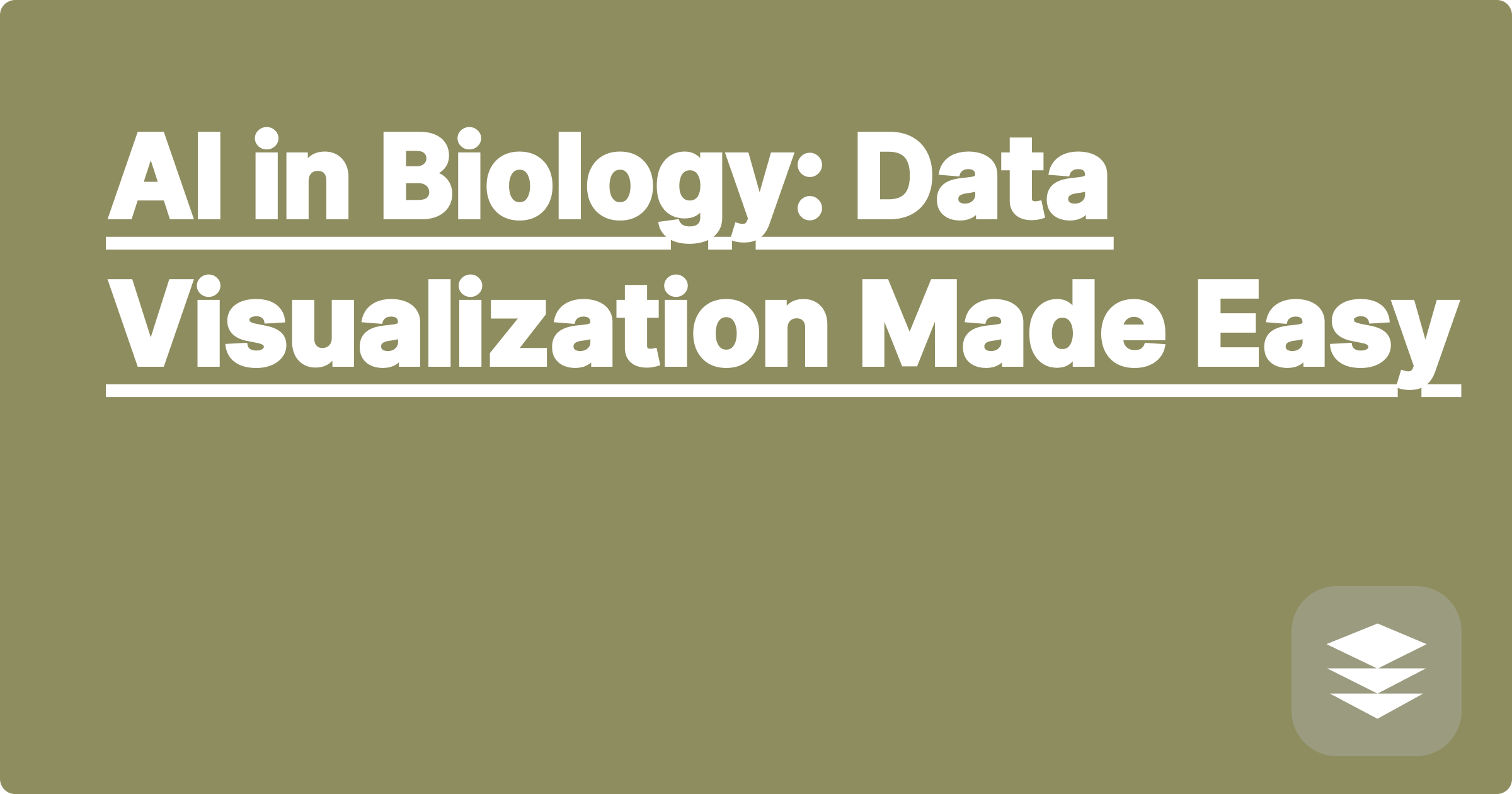
The sheer volume of data generated in modern biology research can be overwhelming. From genomic sequencing to microscopy images, researchers are constantly grappling with massive datasets. Traditional data analysis and visualization methods often struggle to keep pace, leading to bottlenecks in research progress. Fortunately, the rise of artificial intelligence (AI) offers powerful new tools to tackle this challenge, making data visualization easier and more insightful than ever before. This blog post will explore how AI is revolutionizing biological data visualization, empowering STEM students and researchers to unlock the hidden stories within their data.
For STEM students, particularly those involved in research projects, efficient data analysis and visualization are crucial for success. These skills are not only essential for drawing meaningful conclusions from experiments but also for effectively communicating research findings in presentations and publications. Mastering these skills can significantly reduce the time spent on data processing, allowing students to focus on the more creative and intellectual aspects of their research. Moreover, AI-powered tools can help students explore complex datasets more deeply, potentially leading to novel discoveries and insights.
Biological research is increasingly data-intensive. High-throughput experiments, such as next-generation sequencing and proteomics, generate terabytes of data that can be difficult to manage and analyze using traditional methods. Imagine trying to manually analyze millions of DNA sequences or identify patterns in thousands of microscopic images – a daunting task, to say the least. This data deluge poses a significant challenge for researchers, often requiring specialized bioinformatics expertise and significant computational resources. Furthermore, traditional visualization methods can struggle to represent complex, multi-dimensional biological data effectively, hindering the ability to extract meaningful insights.
AI offers a transformative approach to biological data visualization. AI algorithms can automate tedious tasks like data cleaning, pre-processing, and feature extraction, freeing up researchers to focus on interpretation and hypothesis generation. Tools like ChatGPT, Claude, and Wolfram Alpha can be leveraged to analyze complex datasets, identify patterns, and generate insightful visualizations. For example, imagine using ChatGPT to summarize key findings from a large genomic dataset or employing Wolfram Alpha to generate interactive plots of protein interactions. These AI-powered tools can dramatically accelerate the data analysis process and empower researchers to explore their data in new and innovative ways.
Let's walk through a practical example of using a hypothetical AI partner tool called GPAI for visualizing gene expression data. First, upload your gene expression data into GPAI. The tool automatically cleans and pre-processes the data, handling missing values and normalizing expression levels. Next, specify the type of visualization you desire, such as a heatmap or a scatter plot. GPAI then generates the visualization, allowing you to interactively explore the data. You can zoom in on specific genes, filter data based on expression levels, and even ask GPAI to identify clusters of co-expressed genes. GPAI can also generate a narrative summary of the key findings, highlighting significant patterns and trends in the data. This entire process, which might have taken hours or even days using traditional methods, can be completed within minutes using GPAI.
The power of AI-driven data visualization extends across various STEM disciplines. In materials science, AI can analyze microscopy images to identify defects in materials, predict material properties, and even design new materials with desired characteristics. Consider a researcher studying the microstructure of a new alloy. Using AI-powered image analysis, they can quickly identify and classify different phases in the alloy, quantify grain size distribution, and even predict the material's mechanical strength. In chemistry, AI can be used to predict the outcome of chemical reactions, design new drug molecules, and analyze complex spectral data. A chemist could use AI to predict the optimal reaction conditions for synthesizing a new compound, saving valuable time and resources in the lab. In physics, AI can analyze large datasets from particle accelerators, simulate complex physical phenomena, and even discover new physical laws. A physicist could use AI to analyze data from the Large Hadron Collider, searching for evidence of new particles or interactions.
To effectively leverage AI in your STEM research, start by identifying specific tasks that can be automated or augmented by AI tools. Focus on tasks that are time-consuming or require specialized expertise. Experiment with different AI tools and platforms to find the ones that best suit your needs. Don't be afraid to ask for help and collaborate with others who have experience using AI. Remember that AI is a tool, and its effectiveness depends on how you use it. By strategically integrating AI into your workflow, you can significantly enhance your research productivity and gain deeper insights from your data. Sharing your AI-driven visualizations and analysis in presentations and publications can also significantly enhance the impact of your research.
Finally, embrace the power of AI to transform your research. By learning to effectively utilize these powerful tools, you can unlock new levels of productivity and insight, accelerating your progress towards scientific discovery. Explore the various AI tools available, experiment with different approaches, and don't hesitate to seek guidance from experts. The future of STEM research is intertwined with AI, and by embracing these advancements, you can position yourself at the forefront of innovation. Start exploring the possibilities today and witness the transformative impact of AI on your research journey.